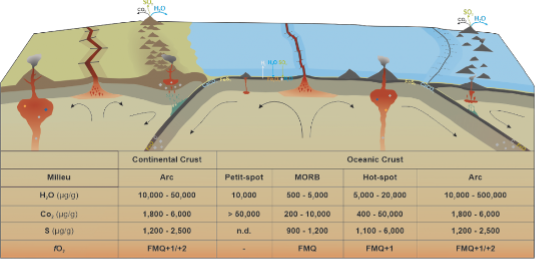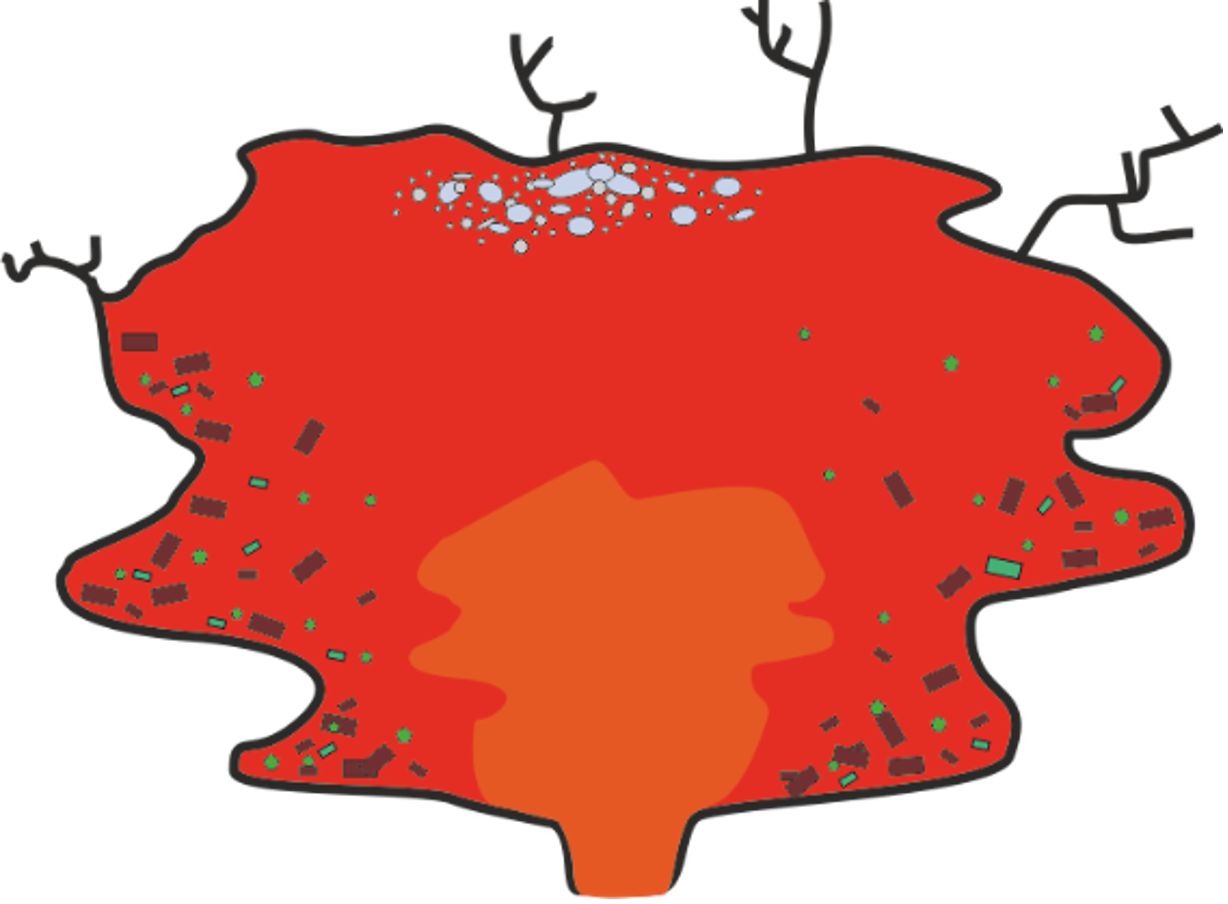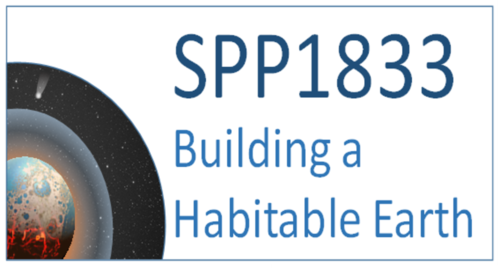Department of Earth Sciences
Service Navigation
SPP1883: Building a Habitable Earth
It is still an open question how Earth became the only known habitable planet. Most likely, a unique combination of processes during Earth’s early evolution was necessary to make Earth habitable, but these processes and their interplay are still poorly constrained. The three most critical aspects are (i) the compositions and sources of Earth’s building materials (ii) the Earth’s early internal processing into crust, mantle, and core and (iii) the evolution of the ocean-atmosphere system. In our quest to reconstruct how the Earth became a habitable planet and how its early surface system evolved through the interaction with the biosphere, we cannot employ current approaches from, e.g., biology, marine sciences or climatology, but rather need to rely strongly on Earth Science-based approaches to study the early geological and extraterrestrial sample record. This is necessary, because such samples provide the only vestige of Earth’s early evolution. Only through an interdisciplinary Earth Science approach we therefore can successfully address the key question as to what conditions were unique to planet Earth so that an environment favourable to the emergence and evolution of life could have developed. The history of Earth’s habitability is filed in the ancient rock record, and only sophisticated Earth Science methodology can read it. Until now, however, the planetary and early geological processes that made Earth the only known habitable planet could not be well addressed, as suitable sample materials and sufficient analytical tools were limited for a long time. This picture has dramatically changed since a couple of years, and new avenues for innovative research emerged. These include the increased availability of pristine old terrestrial and extraterrestrial sample materials, the development of novel analytical techniques and of experimental and modelling approaches that can simulate processes on the early Earth and in the early solar system in unprecedented detail. Within Germany, an internationally highly visible community developed in these fields just recently, largely driven by numerous new university appointments.
Our SPP initiative “Building a Habitable Earth” therefore provides a timely opportunity for the German research community to play a leading international role in this new field. Our proposed SPP will be the first coordinated Earth Science based research program in Germany that will address the causes for Earth’s habitability from different angles. The SPP initiative includes different Earth Science disciplines such as geology, geochemistry, planetology, cosmochemistry, geobiology and geophysical modelling. Up to now, we know that the formation of the Earth comprises several critical steps. These involve the aggregation of smaller asteroids ca. 4.5 Ga ago followed by their amalgamation through giant collisions into a planet-sized Earth. These giant collisions triggered the formation of a deep terrestrial magma ocean that in turn caused segregation of the Earth’s metal core by ca. 50 million years after solar system formation. Already within the first 500 million years, the Earth’s first continents and oceans, as well as a dense atmosphere formed, possibly providing an environment conducive to the formation of the first primitive life forms. The evolution of more complex life took another 3 to 4 billion years and is closely related to the rise of free oxygen in the atmosphere and in the oceans. The early geological record is now known to range back to nearly 4.4 billion years when the oldest known minerals were formed. Extraterrestrial samples are mostly more than 4.4 billion years old, and they preserve information of the earliest chemical differentiation processes in our solar system. Central to the SPP will be the chemical inventory of the Earth, the chemical differentiation into a core, mantle, crust, hydrosphere and atmosphere, the chemical evolution and interaction of these reservoirs with the evolving biosphere, and their contribution to the formation of a life sustaining environment. The SPP will crosslink both established and young researchers and will also provide interdisciplinary training opportunities for young earth scientists, including summer schools. In addition, an SPP framework will guarantee access for the entire German Earth Science community to rare early terrestrial and extraterrestrial samples. The SPP wil also provide the opportunity for ore deposit researchers to study the genesis of economically important resources like Au, Fe, U and noble metals, many of which are bound to rock assemblages older than 2 billion years old.
Global volatile cycles on early Earth
While Earth is a planet where for present-day processes in the interior and at the surface we have a wealth of information, data for the early evolution of the planet is sparse. Apart from few zircon inclusions that date back to Hadean times, first rock samples are limited to the end of the Eoarchaean and to the Archean time. These rock samples, while providing interesting single observations of early Earth’s surface, are only some pieces of a much larger puzzle that we still need to solve to be able to explain why Earth developed to the unique habitable planet that we know. One of the questions that still remain to be answered is by which mechanisms volatiles could be recycled into the upper mantle before the on-set of plate tectonics as it operates today. Subsequent melting of recycled, hydrated crust is needed to explain the chemical composition of Earth’s earliest crust. On the other hand, it is not clear how representative the surviving Archean crust is. Geological measurements can therefore only be interpreted correctly in a global context, if they are combined with a general understanding of early Earth processes.
This can be obtained by making use of computational models that can then complement the geological record to constrain evolution scenarios of early Earth. In the proposed project, we will enhance a thermo-chemical model of Earth’s mantle, lithosphere and crust by including volatile cycles (focussing mainly on H, C and N that form greenhouse gases, but also Xe, Ar and Ne as trace elements) from interior to surface and vice versa. The cycles operate via outgassing, condensation and crustal recycling. We will then compare our model predictions with respect to volatiles to the collected early Earth data. Such a model approach allows to investigate the evolution of volatile reservoirs and isotope relations over time. Using a Monte-Carlo method, we will then model different evolution scenarios for early Earth for random initial thermal and compositional (in terms of volatiles) states of Earth’s interior after the Moon-forming impact. The resulting evolution scenarios can then be matched with field data (especially concerning isotope ratios of noble gases). Constraints set by the Archaean geological record can also help to indicate how the earliest evolution of Earth needed to evolve to explain the later available geological and geochemical samples.

Gaillard et al. 2021; © Vulpius
Global volatile cycles on early Earth
The understanding of volatile cycles on Earth is essential as they have a huge influence on mantle and surface processes. Outgassing from the interior strongly affects the chemical composition of the atmosphere and the oceans. Volatiles in the mantle influence the rheology, trigger melting and lead to ore deposit formation. At the surface, weathering and recycling acts as a huge carbon sink and has a profound effect on the global climate. The aim of this study is the simulation of these volatile cycles on early Earth. We focus mainly on greenhouse gas forming H-C-N as well as on Xe, Ar and Ne as trace elements. For this approach, we enhance a thermo-chemical model of the lithosphere and deeper mantle. The cycles operate from the interior to the surface and back via outgassing, condensation and crustal recycling. One of the main questions of this project is through which mechanisms volatiles could be recycled into the mantle before the on-set of plate tectonics as it operates today (e.g., by sagduction, delamination, erosion).
Volatile release from intrusive magma systems
In this subproject we calculate the volatile release of magma bodies emplaced at different depths within the lithosphere. The contribution of outgassing to the build-up and composition of the atmosphere on early Earth is crucial, not least for the emergence and evolution of life, since it is one of the major volatile sources. While studies of extrusive outgassing exist in the literature, intrusive degassing is mainly neglected. Due to cooling, nominally mafic minerals crystallize out and the remaining melt is enriched with incompatible elements and molecules, including volatiles such as H2O and CO2. They accumulate in the melt until the particular saturation level is exceeded and a volatile phase forms. The volatiles released from the magma body are buoyant and may ascent due to already existing cracks and fissures or may even create new cracks. We compute the amount of H2O and CO2 degassing during crystallization for different pressures. Therefore, we take into account the solubility, the initial volatile content, the pressure and temperature, the specific partition coefficient and the oxygen fugacity. Finally, we benchmark our results with the geological record and compare them with the already existing simulated data for extrusive outgassing to determine the possible impact of intrusive degassing.

© Vulpius
Participants in project SPP 1883
Key Data
- Project number: 255641687 / 404674808
- Project term: Jan 01, 2015 - Aug 06, 2022
- International connection: Australia, Austria, Denmark, France, India, Iran, Italy, Netherlands, Sweden, Switzerland, United Kingdom, USA

